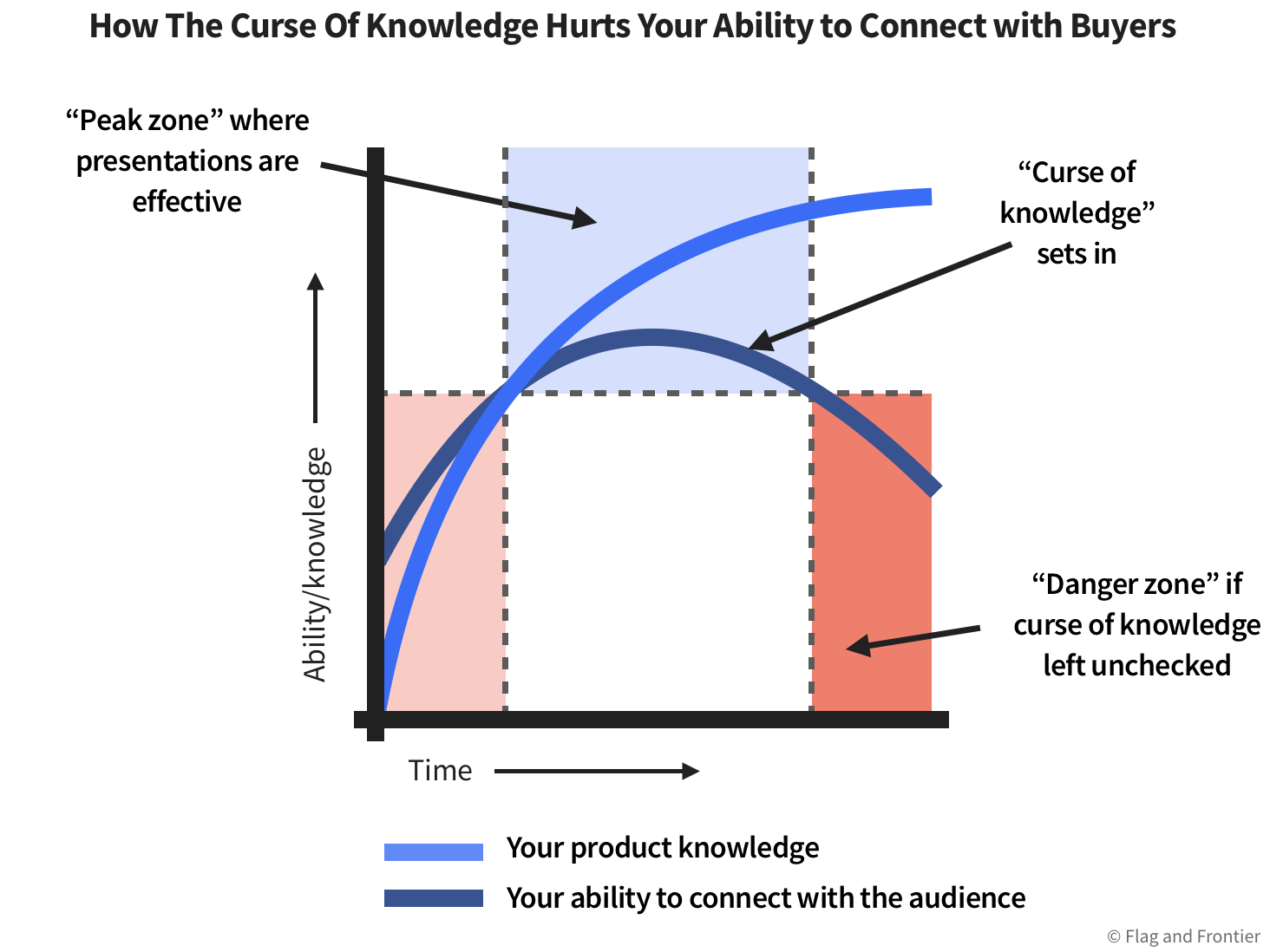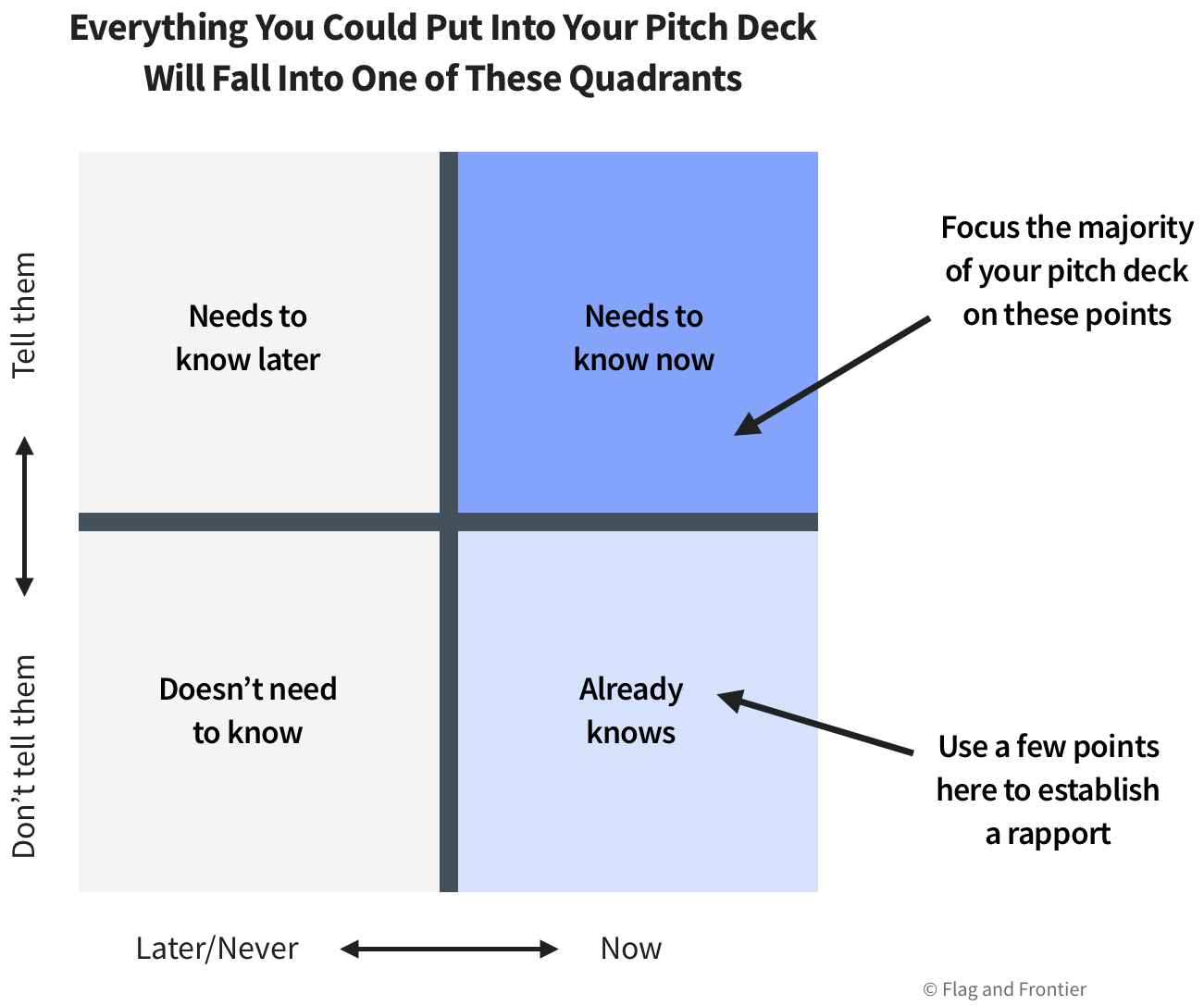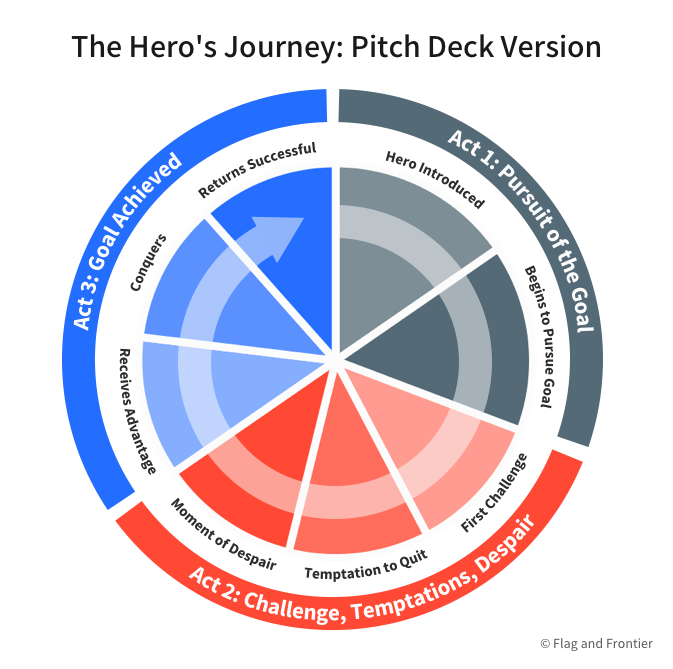What’s the difference between a good and a great B2B pitch deck? A good pitch deck clearly explains your product and what it does. It thoroughly illustrates product features, and it demonstrates how smart and credible your team is.
It’s easy to build good B2B pitch decks. There’s just one problem with good pitch decks, though: they don’t work.
No one will get excited after hearing a “good” presentation. That’s because “good” presentations are a dime a dozen, and your audience has heard hundreds of them already.
“Good” pitch decks are the status quo; that’s why they rarely get results.
What you need is a great pitch deck.
A great pitch deck clearly explains your product and how you’ll solve a problem. It thoroughly illustrates product features and it demonstrates your focus on helping the customer.
Great pitch decks get results. They focus on the audience, while good ones merely focus on the product.
The only downside? Great pitch decks are notoriously difficult to build.
Here, we’ll walk through the process I’ve used to develop hundreds of great pitch decks that got results, and how you can do the same.
Related: Creating a Pitch Deck Message to Simplify
Why the curse of knowledge keeps your pitch decks from being great
You might think that the more you know about a product and the longer you’ve been around it, the easier it would be to make a great pitch deck. Up to a point that’s true, but what happens to most is that they’ve gotten so comfortable with their product, they have difficultly seeing through the eyes of their audience. Empathizing with your audience, though, is exactly what you need to do in order to build a great pitch deck.
This phenomenon is called the “curse of knowledge.”
When you succumb to the curse of knowledge, you’ll easily create pitch decks that may sound great to you but are lost on others. This is a major problem. A potential buyer isn’t going to take a Codecademy class or bone up on the difference between machine learning and artificial intelligence just so they can figure out how your product relates to them. You have to meet the buyer on his or her level.

Don’t worry: curing yourself of the curse of knowledge is possible. Keep reading, and you’ll know how to create a pitch deck that’s built around the needs of your audience first.
Part I: Build your blueprint with these three fundamentals
Think of these steps as creating the blueprint that will form the basis for the rest of your presentation.
Describe the audience
Saying that you’re selling to “potential buyers” doesn’t count. You need to be much more descriptive about your target market. Depending on who is in the room, your audience may have vastly different areas of expertise and ignorance, biases and misconceptions. If you know what these are, then you’ll have a much better chance of connecting.
Define the outcome
What do you want your audience to do once you’re finishing pitching? Don’t assume that they know. Sure, the ultimate outcome might be a sale, but that’s not necessarily the next step they’ll take. Knowing the answer to ahead of time will help you frame the presentation around this goal.
Identify what you need to say
If you know whom you’re pitching to and what you want them to do, now you can figure out what to say. To get this right, brainstorm a list of everything you think you might want to convey in your pitch deck. Everything you list will fall into one of these four categories:

Next, unmercifully cut out everything that isn’t in the top right quadrant. The ideal B2B pitch deck will only include information that your audience needs to know now. Everything else will just make your content harder to digest.
Part II: Structure your B2B pitch deck around the hero’s journey
Start by mapping out your pitch around something called the hero’s journey. It’s a concept coined by author and professor, Joseph Campbell, in his book, “The Hero With A Thousand Faces.”
The premise is this: all of the world’s myths, stories, legends and religious origin stories are based upon the same “meta story.” This story is so hardwired into our culture and our humanity that we respond very strongly when stories are framed in this way. Indeed, many contemporary movies and books use this framework, as well.
The simplified hero’s journey
That might sound like a tall order to live up to, but the good news is that structuring your presentation around this “meta story” isn’t hard.
Here’s a simplified version:
- Act 1: The hero is pursuing some goal or dream.
- Act 2: The hero faces challenges, temptations and setbacks that prevent him from reaching this goal.
- Act 3: An external force intervenes to give the hero a special advantage. The hero conquers all obstacles and succeeds.
Using this framework accomplishes a few things. First, the story gives the audience something tangible to latch on to. After all, people remember stories, not facts and figures. Secondly, the familiar structure of this story makes it easy for your audience to process it. And finally, because the hero ends up in a new, better-than-normal state, it clearly shows how your own product provides a real benefit.

Your product may or may not lend itself to having a single hero with an isolated problem. So feel free use this structure literally, or just as a guide for establishing the sequence of your slides.
A terrible name and a great example
Here’s an example to get you started with developing your own pitch deck.
Say you’re building a pitch deck for an email plugin that automatically reminds you when you haven’t responded to messages from VIPs. Let’s give this fictional product a really bad name: ForgetMeNote.
The audience for ForgetMeNote is executives who can’t afford an assistant but don’t use a CRM to help them keep track of contacts. The story arc would go something like this:
- Act 1: Jan is a 42-year-old VP of Business Development for a mid-sized software company. She’s been working on two big relationships with major software vendors that, if pursued successfully, will result in major wins for her company.
- Act 2: When she started her job two years ago, she no trouble keeping up with messages. But today, she has 1,271 unread messages her inbox, thanks to an influx of spam and an increasingly large network. The threat of missing a crucial email means that Jan now checks her inbox constantly, which saps her energy and stresses her out.
- Act 3: Enter ForgetMeNote. When Jan doesn’t respond to a message from someone on her VIP list, she automatically receives a notification. Now that Jan can quit stressing about missing important emails, her days are filled with productive work instead of sorting through spam. Not only that, but the two deals Jan had been pursuing recently closed, thanks to her ability to stay on top of the fast-paced negotiations that were involved.
Spend some time building a story for your own audience. With your hero’s story in hand, you will now ready to create the slides themselves.
Part III: Build your slides
Use the outline below to structure your pitch deck. There’s no formula that will work universally for every situation, so feel free to adjust these as you see fit.
- Cover slide. Who you are and a tagline to set the tone.
- Outline. Clarify what you’re going to discuss in your presentation.
- Present the problem. The more valuable the deal, then the more tailored this section should be.
- Exacerbate the problem. Make sure your audience is fully aware of the pain that they will endure if they don’t solve the problem.
- Introduce your solution. Do so in terms of the benefits it provides to your audience.
- Explain how your solution works. Your goal here is to illustrate that your solution is something your audience can actually use, not go into a technical breakdown.
- Illustrate the specific outcomes. The more tangible, the better. Just make sure they are realistic.
- Build credibility. Share your client list, revenue, caliber of your team, or whatever else will help your audience have confidence in you.
- Show, don’t just tell. Give your audience a live walk-through.
- Recap what you’ve talked about. Highlight the salient points you want your audience to remember.
- Finally, clarify the next steps. Provide pertinent details here, such as an outline of a pilot test, pricing, etc. This will vary significantly from business to business.
Sign Up: Receive the StartupNation newsletter!
Part IV: Polish
Now that your pitch deck is complete, it’s time to go through it a few more times and really make it shine. While you look for tweaks to make, keep these best practices in mind:
Edit for succinctness
Nothing makes me cringe more than seeing a slide crammed with a ton of copy. Why? The first thing people do when a new slide comes up is read. And if they’re reading, they’re not paying attention to you.
Therefore, the content on your slides should only serve to anchor the points you’re making verbally, not give you something to read out loud. Go through your presentation and edit out anything that will detract from the main message.
Build consistency
The goal of your pitch deck is to get your audience to understand and remember some key points. But it’s hard for them to do that if you’re using different terms to describe the same idea. That’s why it’s a good idea to go through your pitch deck to make sure your word and phrase choices are consistent from slide to slide.
Use design to aid comprehension
While you can attempt this step yourself, I’ve found that it’s always worth the cost of having a graphic designer help with the final product. Not only will a good designer improve the production quality of your work, they’ll also help you improve listener comprehension by adjusting the typography, white space and color choices.
Are you done now? Yes and no
If there’s one thing I’ve learned after building hundreds of pitch decks, it’s this: no deck is ever truly finished. Each time, I inevitably find ways to improve the material. You will, too.
Don’t look at your pitch decks as a one-time project; treat them as living documents that will improve over time. Not only will your presentations continue to be more effective, but you’ll be much happier if you recognize that things won’t be perfect after the first iteration.
To build the best pitch deck, look for an outside perspective
Sometimes the best way to create truly great material is bring in an outsider. In fact, that’s usually the fastest way to get a fresh perspective. Bestselling authors employ editors to help them bring out the best in their work, top musicians need producers to help them get just the right sound, and even presidents use speechwriters to help them convey their message with impact.
Creating an amazing pitch deck isn’t much different. Whether you get feedback from a co-worker, a marketing agency or a consultant, having an outsider give you an objective review of your work can pay huge dividends.






